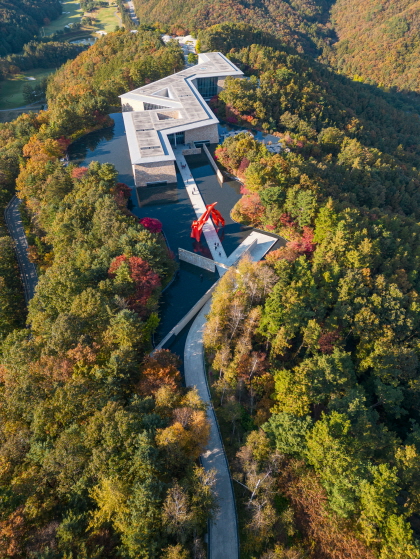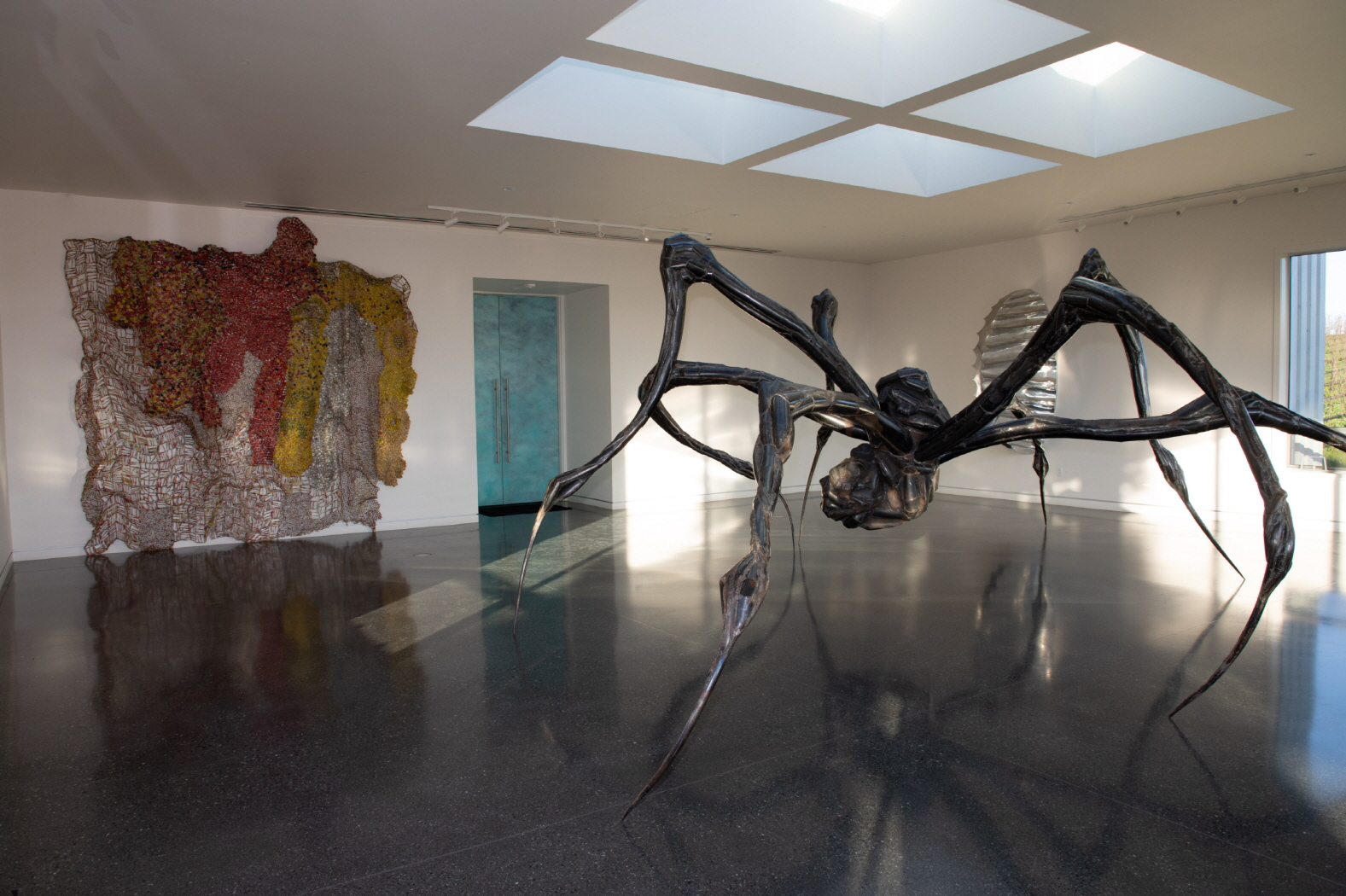Larry’s List recently released its second Private Art Museum Report on its website. A chapter of the report is devoted to South Korea, where the number of private art museums has rapidly increased in recent years. The report highlights Seoul as the city with the highest number of private contemporary art museums worldwide, while South Korea ranks third among countries.

Museum SAN. © Museum SAN.
Today, changes in socioeconomic dynamics have transformed the function and role of private contemporary art museums.
Larry’s List, an art collector editorial and knowledge company, released its first Private Art Museum Report in 2016 to assess the status of private contemporary art museums worldwide, and its second report was released on its website on June 14.
Larry’s List serves as a platform that provides data, research, and insider access to contemporary art. The platform contains interviews with over 300 art collectors worldwide and reports relevant to contemporary art collecting.
The recently released Private Art Museum Report provides a comprehensive analysis of private contemporary art museums worldwide, examining their presence and evolution both at country and city levels. The report delves into the operational aspects of these museums, exploring how they promote themselves through online platforms. Additionally, it introduces the art collectors who founded these private museums as well as the art experts who manage the collections.
The fourth chapter of this report specifically focuses on the private contemporary art museums in South Korea. In recent years, South Korea’s art scene has seen rapid growth, establishing the country as a major player in the global art scene. According to the report, South Korea is one of the top three countries with the most private contemporary art museums in the world. Notably, Seoul, the capital city of South Korea, emerges as the home to the largest number of private art museums globally.
 HANSOL HOLDINGS collection. Namjun Paik, ‘Communication Tower,’ 1994, Mixed media, television monitors, 193x193x520(h)cm. © Museum San.
HANSOL HOLDINGS collection. Namjun Paik, ‘Communication Tower,’ 1994, Mixed media, television monitors, 193x193x520(h)cm. © Museum San.The definition of a private contemporary art museum can vary across countries and institutions, and there is no universally accepted standard. The surveyed private contemporary art museums in the report are diverse; however, they share a common core value of collecting contemporary art and publicly showcasing personal art collections to the general public.
In a way, the report serves as an example of the role and mission of contemporary art collectors. Many private collectors who founded private museums did so with the intention of fostering the development of the art ecosystem and the public good rather than solely seeking personal gain.
The report identified 446 private art museums in 59 countries worldwide. Since its first Private Art Museum Report in 2016, 98 new private contemporary art museums have opened and continue to operate around the world.
In terms of the number of private contemporary art museums by country, Germany takes the lead with 60 museums, followed by the United States with 59. South Korea ranks third with 50 museums, while Greater China and Italy have 30 museums each. These top five countries account for 50% of the world’s private art museums.
By city, Seoul tops the list with 17 private contemporary art museums, followed by Berlin with 14, Beijing with 11, New York with 10, and Athens with 9. Additionally, Gyeonggi-do in South Korea also secures a notable position as the seventh region with the highest number of private contemporary art museums.
 The Donum Estate, ‘Vertical Panorama Pavilion,’ 2022, Studio Other Spaces – Olafur Eliasson and Sebastian Behmann. Photo: Adam Potts. © The Donum Estate, Studio Other Spaces.
The Donum Estate, ‘Vertical Panorama Pavilion,’ 2022, Studio Other Spaces – Olafur Eliasson and Sebastian Behmann. Photo: Adam Potts. © The Donum Estate, Studio Other Spaces.The culture of art collecting has its origins in the Western cultural sphere and is a more widespread activity in these countries compared to Asia. Germany, the United States, and Italy, which are the Western countries that ranked in the top 5 in terms of the number of private art museums, all have a long-standing tradition of art collecting.
In contrast, China has a relatively short history of art collecting. However, since the 2000s, the art scene in China has experienced rapid growth, and the number of private contemporary art museums has been consistently increasing since the opening of the first one in 2002. Although China’s history of art collecting may not be extensive, with a 17% share of the global art market in 2022 and the third-largest art market in the world, it is reasonable to expect that the number of private art museums in China will be significant.
South Korea has a similarly short history of art collecting as China. However, its art market is significantly smaller, with a mere 1% share of the global art market in 2022. Nonetheless, South Korea has witnessed remarkable growth, emerging as a country with one of the highest numbers of private art museums worldwide.
In South Korea, 76% of private museums opened after 2000, and 55% of them were founded after 2010, which is similar to the global trend.
Seoul and Gyeonggi Province, the capital areas of South Korea, are home to 60% of the country’s population and 58% of its private contemporary art museums. Among these museums, 34% are located in Seoul and 21% in Gyeonggi Province, with one private museum in Busan, the second-largest city after Seoul, and three on Jeju Island.
The gender ratio of private art museum founders in South Korea is encouraging, with 27 men and 21 women among the 48 founders, representing a 60:40 ratio of male to female founders. Although this is due to the unique cultural context of Korea, it shows a stark contrast to the global trend, where men comprise 58% of founders and women account for only 16%.
 Installation view of the Donum Estate. Foreground: Louise Bourgeois, 'Crouching Spider,' 2003.
Installation view of the Donum Estate. Foreground: Louise Bourgeois, 'Crouching Spider,' 2003.Back: El Anatsui, 'Rehearsal,' 2015. © The Donum Collection. Photo by Robert Berg.
The report highlights that the growth of private contemporary art museums in Korea has been significantly influenced by government support and other environmental factors.
The South Korean Government’s Museum and Art Gallery Support Act has played a significant role in promoting the establishment of private museums. Registered museums that meet certain requirements in terms of collection size, curators, facilities, and opening hours are eligible to receive benefits from the South Korean Ministry of Culture, Sports, and Tourism (MCST).
South Korea allocates approximately 1.3% of its annual budget to the MCST, with approximately 30% allocated to culture and the arts. The budget allocated to the MCST in 2023 amounted to 6.74 trillion won, of which 2.314 trillion won was specifically designated for the culture and arts sector.
The growth of South Korea’s art scene has also been fueled by the recent resurgence of “Hallyu,” or the Korean Wave culture. Through K-pop, e-sports, movies, and beauty culture, South Korea has established itself as a leading exporter of global culture.
Additionally, Korean celebrity collectors such as T.O.P and G-Dragon of the K-pop boy group BigBang, as well as RM of the world phenomenon boy band BTS, openly share their collections and interests in art on their social networking profiles. This has had a positive impact on elevating the status of art and collecting among the younger generations, stimulating their interest in art appreciation and encouraging them to visit galleries and museums.
Highlighting private art museums in South Korea in a separate chapter of the report reflects the increased presence of the Korean art scene on the international art stage. But this also means that it’s time for the Korean art scene to consider how to move forward on the international art stage with this increased presence.
In terms of art collecting, based on the database of various private contemporary art collectors worldwide established by Larry’s List, this report showcases the role of individuals as art collectors.
The report focuses on specific groups of art collectors who have chosen to publicly share their collections to encourage public appreciation of art. By establishing private art museums and showcasing their collections through various exhibitions, these collectors not only support artists but also contribute to enriching the cultural landscape of cities and countries. Their collections serve as cultural heritage, highlighting the significant role these art collectors play in the art world.
*The report is based on research conducted by a project team from the Department of Sociology at the University of Amsterdam, one of the world’s leading institutions for the study of economic sociology, art sociology, and cultural sociology, utilizing the database of contemporary art collectors built by Larry’s List.













